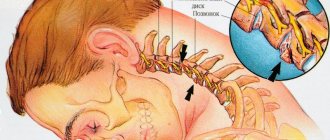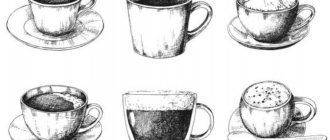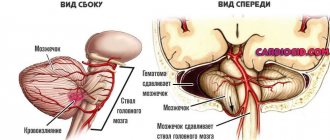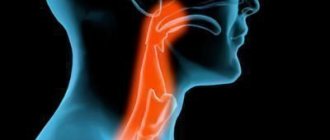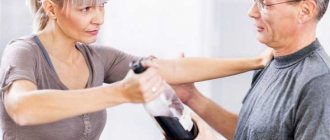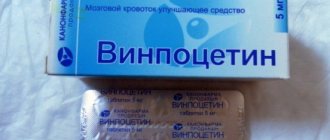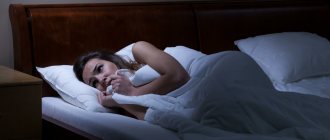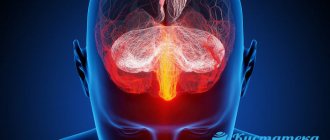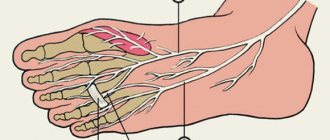Many mothers and fathers know firsthand that taking their offspring to a clinic or hospital is a real parental “feat.” The first question from a child who hears where he has to go most often concerns injections. Children are afraid of injections because they are unpleasant and sometimes a little painful. So that every vaccination or injection is not accompanied by tears and crying, it is useful to know how to teach your baby to calmly accept this procedure. The advice of pediatricians and child psychologists will help with this.
Causes
If after the injection the injection site hurts greatly, the person may then begin to experience horror before such procedures.
Fear of injections is caused by various reasons that have a negative impact on a person’s mental health.
Fear of needles and injections can arise for the following reasons:
- Negative experience. After the injection, a bump or bruise may appear on the body. Also, the process itself is accompanied by unpleasant sensations, which the person remembers and tries to avoid such discomfort in the future. Long-term illnesses that are treated with injections worsen the situation. As a result, there are future problems with medical procedures that involve the use of needles.
- Bullying in childhood. Children are often scared with injections if they behave badly and refuse to carry out their parents’ instructions. All this is deposited in the child’s subconscious and periodically emerges. This creates a serious psychological trauma that worries a person throughout his life.
- Use of low quality syringes. Previously, skin puncture caused great discomfort to patients, as the procedures were carried out using low-quality devices.
- Features of character and personality. Fear of needles often occurs in people who are overly sensitive and receptive. Any information that is negative for them leads to fear, which sooner or later becomes a phobia. Fear may well be caused by stories about unsterile needles or possible exposure to a dangerous disease during a medical procedure.
- Social factors. The phobia can be caused by non-professional workers who administer the injection. Also, such phobias are encountered by patients who received an injection at home without the supervision of a specialist. Such situations lead to serious complications that force a person to be afraid of injections in the future.
- Stressful situations. Long-term stress leads to the development of mental disorders. In this state, a person is susceptible to the influence of various negative factors that give rise to the development of a phobia.
Trypanophobia can be caused simultaneously by several negative factors, which force a person to build for himself a kind of barrier from procedures that require puncturing the skin.
Some experts are of the opinion that phobia is caused by genetic reasons. Even in ancient times, people were afraid of bites and punctures of the body, which was passed on to subsequent generations.
How to give an intramuscular injection?
Emulsions, antibiotics, and compositions in the form of suspensions are placed into the muscle. When administered correctly intramuscularly, the drugs quickly spread through the blood throughout the body. You cannot inject at a point near which there are large vessels, nerve nodes, bone and cartilage tissues.
For the injection, select an area with a thick muscle layer: the buttock, dewlap or triceps brachii muscle. To inject an adult animal, take a 4 cm needle with a sharply beveled end, for an injection to a calf - 1 cm. The needle should not be crooked or dull, otherwise the procedure will be painful and may cause a purulent inflammatory process.
An intramuscular injection is given as follows:
- The needle is brought perpendicular to the body.
- Injected into muscle tissue 2/3 of the way.
- By pressing on the piston, the medicine is sprayed out of the syringe.
- Remove the needle from the muscle.
- Lubricate the injection point with iodine.
If two medications need to be administered, then after the first injection the syringe is disconnected and the needle is left in the body. Take another syringe with the drug, attach it to the needle, and squeeze out the solution.
Symptoms
Fear of medical needles and injections does not develop unnoticed. In a person with such a mental disorder, symptoms characteristic of this condition become noticeable. When they appear, you need to contact a qualified specialist who will help you cope with your fear.
Mental and emotional symptoms
If a person with trypanophobia is about to receive an injection, due to anxiety, he is unable to relax and fully rest.
A person exhibits symptoms of trypanophobia immediately before he is about to undergo an injection. They may also occur before a routine medical examination.
The severity of painful symptoms directly depends on the severity of the phobia.
A phobia reveals itself by the following clinical signs:
- Sleep problems that lead to insomnia or unstable sleep.
- Feeling anxious and unable to concentrate on daily tasks.
- The appearance of nervousness and nervous tics, accompanied by obsessive thoughts about injections and needles.
- Increased feelings of anxiety immediately before the injection.
- Constantly scrolling through images that relate to medical needles and injections. Most of them are characterized by a negative character.
A person susceptible to trypanophobia exhibits an unstable emotional state. Because the patient is afraid, he becomes too whiny, irritable and withdrawn.
Physical ailments
Fear of injections in children and adults is accompanied not only by mental, but also by physical symptoms of illness. The following vegetative signs are distinguished:
- Fever or chills.
- Rapid pulse.
- Exacerbation of cardiovascular disorders (arrhythmia, angina).
- A sharp decrease or increase in blood pressure.
- Trembling of the upper or lower extremities.
- Feeling very weak.
- Nausea and sometimes vomiting.
- Feeling of lack of air.
In especially severe cases, a patient with trypanophobia may even faint.
Painful symptoms reach their peak at the moment when a person with a phobia enters the doctor’s office and begins to prepare for the procedure.
Intravenous injections
Liquid preparations with high transparency are injected into the vein, which do not provoke the clumping of red blood cells. Intravenous injections of cloudy solutions that form sediment are unacceptable. Intravenous infusions are used only in emergency cases: for example, with severe paresis, a tetanic attack in a cow, or with a serious electrolyte imbalance in a sick calf. For injection, you can use either a disposable syringe or a Bobrov unit. The injection is made into the jugular vein running along the neck. Finding it is not difficult: you need to lift the cow’s head, stretch the skin on the neck. The largest protruding vessel under the skin is the jugular vein.
An intravenous injection is given to a cow as follows:
- Having found the jugular vein, squeeze it with your finger so that it swells. The filling is determined by touch. When filling is low, the finger pressure is reduced.
- The injection site is wiped with an antiseptic.
- The needle is immersed into the body, pointing upward at 45°. Blood should come from the wound. If it does not flow or comes in a weak stream, then the needle either entered the wrong place or did not pierce the vascular wall. The direction or depth of the needle needs to be adjusted.
- The needle is held with the thumb and forefinger. Remove the finger squeezing the vein.
- The medicinal solution is slowly injected.
- After the injection, the vein is compressed again and the needle is pulled out.
- The injection point is wiped with iodine.
See also
2 types of cattle fattening, what nutrition is needed and how to choose calvesRead
It is more difficult to give an intravenous injection to a cow than any other; if you are unsure, it is better to seek help from a veterinarian. The medicine immediately enters the bloodstream; it is unacceptable to exceed even the minimum dosage.
Treatment
You shouldn’t “dismiss” the problem, otherwise it will only be more difficult to deal with it in the future.
A competent psychotherapist can tell you how to deal with fear. It is with him that you should make an appointment if you suspect the development of trypanophobia.
Trypanophobia cannot be cured solely with medication. Without the involvement of psychotherapy, the patient will not achieve complete relief from the fear of needles and injections.
Doctors recommend combining medication and psychotherapeutic techniques to achieve a quick recovery from fear of needles (fear of needles).
Psychotherapy
Psychologists name many therapeutic techniques that are actively used for complaints of phobic conditions. Most of them help to cope with fear and panic attacks that appear during an exacerbation of a mental disorder.
Fear of needles can be successfully treated with the following psychotherapy methods:
- Hypnotherapy. Hypnosis sessions are conducted in order to instill in the patient certain attitudes that suppress the development of fear. The specialist influences the person’s subconscious and gives him positive information about injections, which should not cause any fear in the future.
- Cognitive behavioral therapy. During this treatment, techniques are used that affect a person’s consciousness. Thanks to this, he begins to understand that his behavior and certain thinking patterns were built incorrectly. During psychotherapeutic sessions, new beliefs are built that make it possible in the future to cope with panic attacks at the sight of needles or thoughts about injections.
Regular sessions at the clinic help a person stop being afraid of muscle injections. If I was afraid before and even now I am afraid of injections into the buttock, then this will soon pass. Successful therapy allows you to completely free yourself from fear, which worsens the quality of life.
Treatment must be continued until the symptoms of trypanophobia completely disappear.
Medication method
In extreme cases, doctors insist on drug treatment for trypanophobia. Such measures are required if fear of needles prevents a person from leading normal daily life. His existence passes in horror and fear. He can't help but think that one day he will get an injection. And this is what patients are constantly afraid of.
Taking medications is required when a panic attack occurs that cannot be controlled with non-medicinal methods. In such situations, it is worth taking a sedative. Antidepressants and tranquilizers also help cope with phobias.
Subcutaneous injections
Water-, oil-, and alcohol-based solutions are injected under the skin. The drug begins to act 5-20 minutes after the injection, which is faster than when injected into the muscle. Subcutaneous injections are less painful for the cow. For injection, select an area where the skin is folded, easily pulled back with fingers, and there are no large vessels, nerve nodes, bone or vein tissues nearby. The best options are to inject into the neck, middle of the forearm or dewlap.
Expert opinion
Zarechny Maxim Valerievich
Agronomist with 12 years of experience. Our best country expert.
Ask a Question
To inject a calf, a 1 cm needle is enough; for a subcutaneous injection, an adult cow requires a 2.5 or 3 cm tool. The needle is inserted 2/3 of the way, it enters the subcutaneous fatty tissue.
Make a subcutaneous injection as follows:
- Wipe the injection site with alcohol.
- Stretch the skin with your fingers.
- The needle is inserted at an angle of 30° to the surface of the body.
- Squeeze out the medicine.
- Take out the needle.
- The injection point is lubricated with iodine.
See also
Pros and cons of keeping cows tethered, rules and what happens in winterRead
In sick calves, medications are administered intraperitoneally if subcutaneous administration is not feasible. Serous tissues in the abdomen have increased resorption, due to which a small animal can be given a significant volume of fluid, which is used for dehydration and dyspepsia. For calves under 3 days of age, medications are placed in the hungry hole on both sides, and from 3 days of age - only on the right. The needle is inserted slowly, directed towards the middle of the abdominal cavity, slightly down and back at an angle of 50°.
